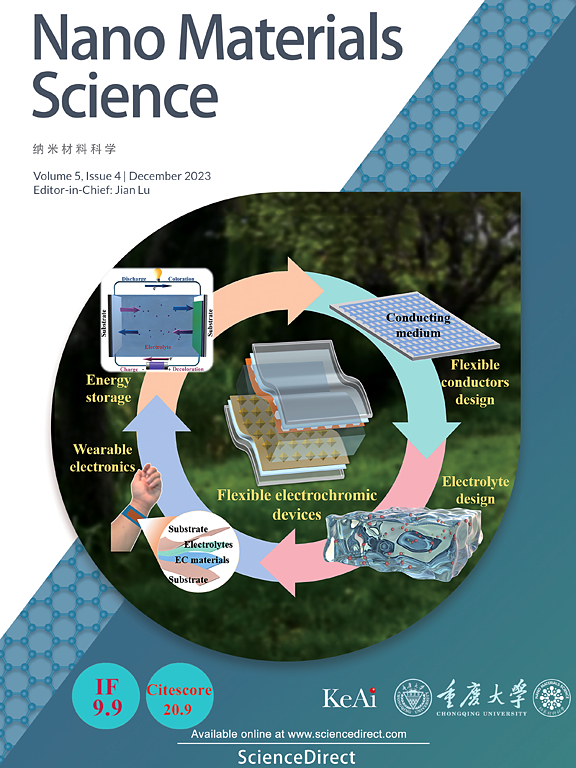Spatially engineering tri-layer nanofiber dressings featuring asymmetric wettability for wound healing
IF 17.9
2区 材料科学
Q1 Engineering
引用次数: 0
Abstract
Inspired by the skin structure, an asymmetric wettability tri-layer nanofiber membrane (TNM) consisting of hydrophilic inner layer loaded with lidocaine hydrochloride (LID), hydrophobic middle layer with ciprofloxacin (CIP) and hydrophobic outer layer has been created. The hydrophobic outer layer endows the TNM with waterproof function and anti-adhesion from contaminants. The hydrophobic middle layer with CIP preserves long-term inhibition of bacteria growth and the hydrophilic inner layer with LID possesses optimal water-absorbing capacity and air permeability. The TNM dramatically elevates the water contact angles from 10° (inner layer) to 120° (outer layer), indicating an asymmetric wettability, which could directionally transport wound exudate within the materials and meanwhile maintain a comfortable and moist environment to promote wound healing. Furthermore, the sequential release of LID and CIP could relieve pain rapidly and achieve antibacterial effect in the long run, respectively. In addition, the TNM shows superior biocompatibility towards L929 cells. The in vivo results show the TNM could prevent infection, accelerate epithelial regeneration and significantly accelerate wound healing. This study indicates the developed TNM with asymmetrical wettability and synergetic drug release shows great potential as a wound dressing in clinical application.
空间工程三层纳米纤维敷料具有非对称润湿性,可促进伤口愈合
受皮肤结构的启发,一种非对称润湿性三层纳米纤维膜(TNM)应运而生,它由含有盐酸利多卡因(LID)的亲水性内层、含有环丙沙星(CIP)的疏水性中层和疏水性外层组成。疏水性外层赋予 TNM 防水功能,并防止污染物附着。带有 CIP 的疏水性中间层可长期抑制细菌生长,而带有 LID 的亲水性内层则具有最佳的吸水能力和透气性。TNM 显著提高了水接触角,从 10°(内层)到 120°(外层),显示出非对称润湿性,可定向输送材料内的伤口渗出物,同时保持舒适湿润的环境,促进伤口愈合。此外,LID 和 CIP 的顺序释放可分别快速止痛和长期抗菌。此外,TNM 对 L929 细胞具有良好的生物相容性。体内研究结果表明,TNM 可预防感染、加速上皮再生并显著加快伤口愈合。这项研究表明,所开发的具有非对称润湿性和协同药物释放功能的 TNM 作为一种伤口敷料在临床应用方面具有巨大的潜力。
本文章由计算机程序翻译,如有差异,请以英文原文为准。
求助全文
约1分钟内获得全文
求助全文
来源期刊

Nano Materials Science
Engineering-Mechanics of Materials
CiteScore
20.90
自引率
3.00%
发文量
294
审稿时长
9 weeks
期刊介绍:
Nano Materials Science (NMS) is an international and interdisciplinary, open access, scholarly journal. NMS publishes peer-reviewed original articles and reviews on nanoscale material science and nanometer devices, with topics encompassing preparation and processing; high-throughput characterization; material performance evaluation and application of material characteristics such as the microstructure and properties of one-dimensional, two-dimensional, and three-dimensional nanostructured and nanofunctional materials; design, preparation, and processing techniques; and performance evaluation technology and nanometer device applications.
文献相关原料
公司名称
产品信息
麦克林
Hexafluoroisopropanol (HFIP)
阿拉丁
CIP
 求助内容:
求助内容: 应助结果提醒方式:
应助结果提醒方式:


